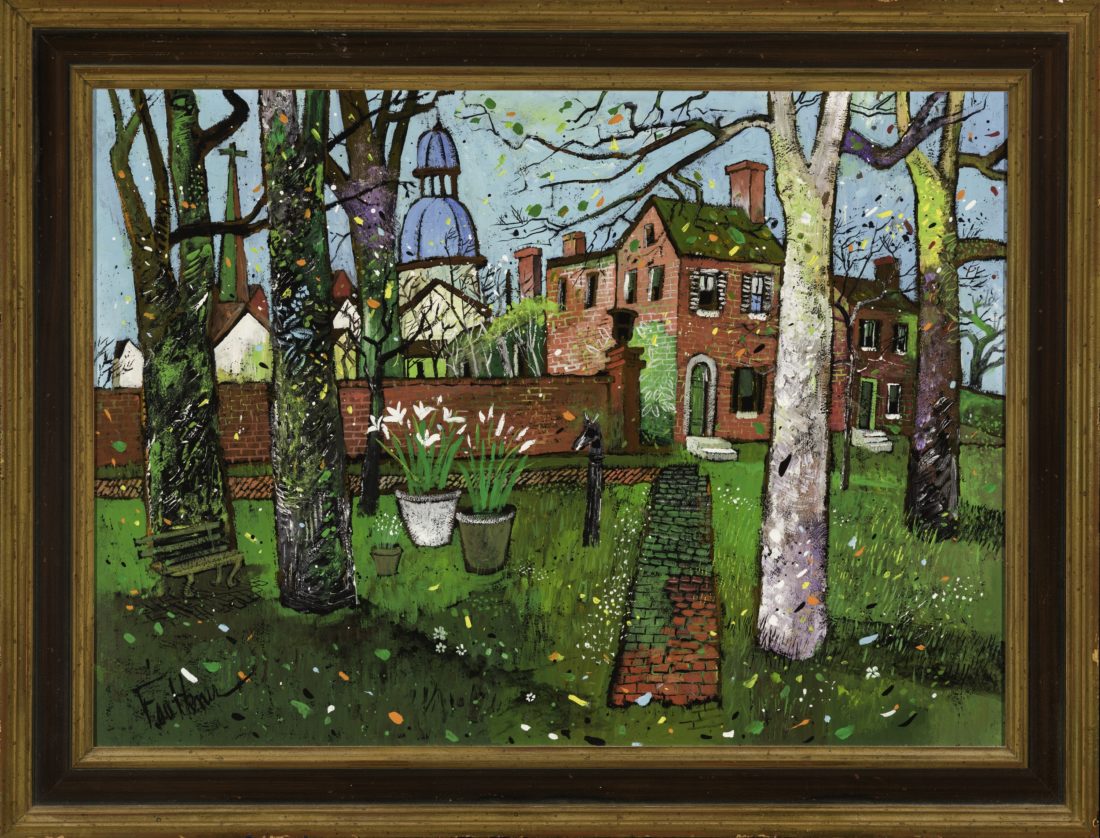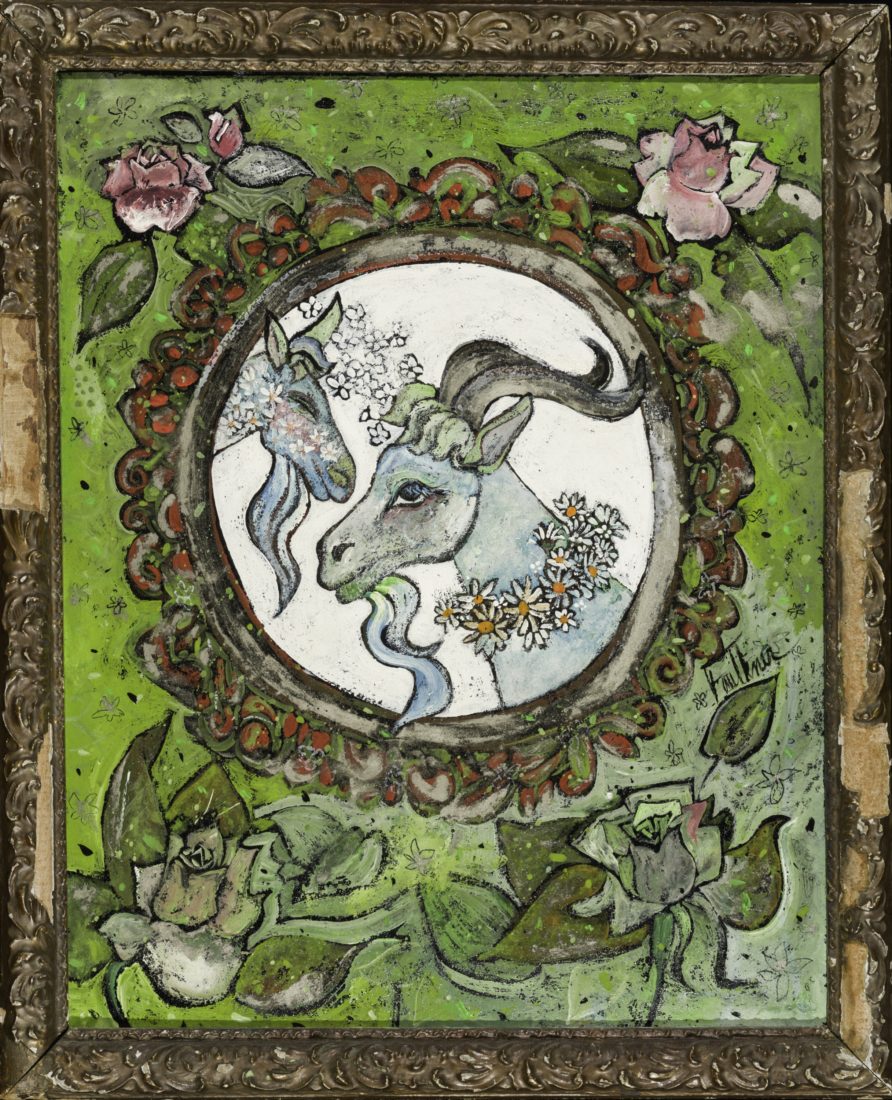Some people might have been surprised to find a whimsical green unicorn, a pair of love-struck goats, or a bejeweled owl at Cross Gate Gallery’s tenth annual Sporting Art Auction at Keeneland in Lexington, Kentucky, this past weekend. These fantastical, highly stylized paintings by the late artist Henry Faulkner stood out against the auction’s catalog of hunting dogs, racing thoroughbreds, and foxhunts—but the thirteen Faulkners were some of this year’s most sought-after works.
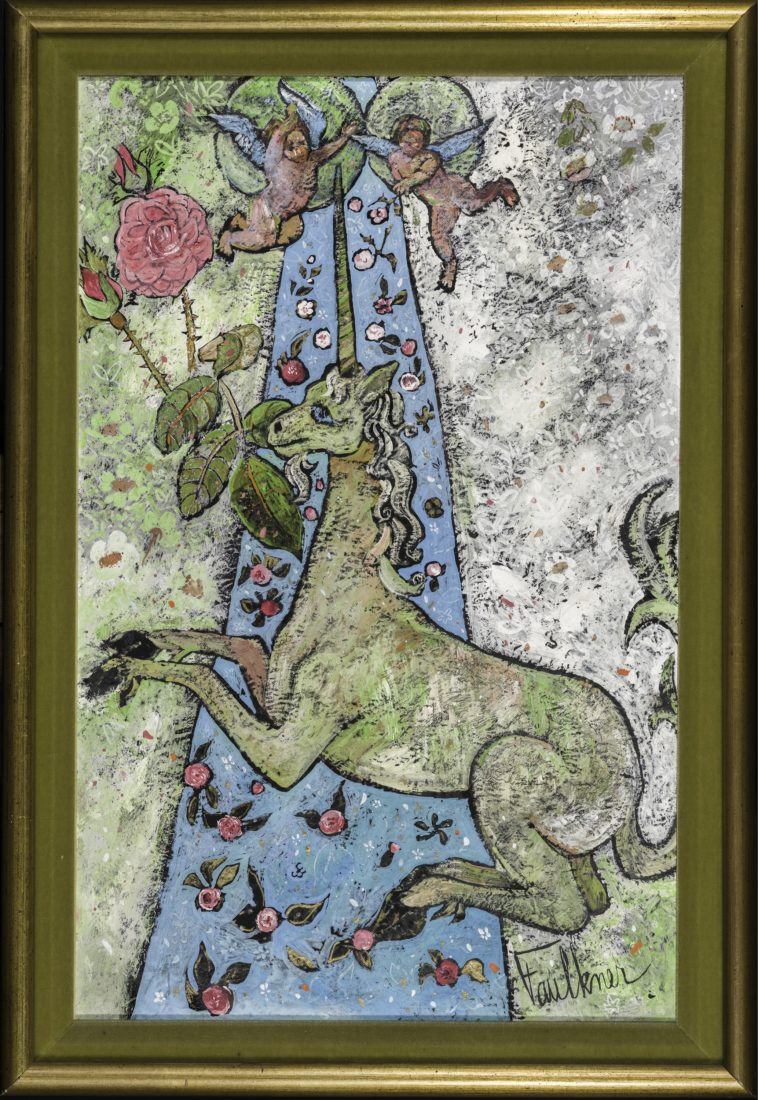
With a winning bid of $123,375, the Lexington native’s Floral painting was the most popular piece at the recent auction. “People are scrambling to find just one Faulker painting,” says Greg Ladd, the owner of Cross Gate Gallery. “The fact that we can put thirteen in the auction is a big deal.”

Ladd first met Faulkner in the late seventies and traded with him for years, exchanging his gallery’s old, high-quality frames for paintings. The Kentucky-born artist gave Ladd his last painting before he unexpectedly died in 1981. “He was a real character, a lot eccentric,” Ladd remembers. Faulkner was often accompanied by his goat Alice, and when he wasn’t, she was sitting in his convertible outside. Sometimes, he’d come in with freshly picked corn to share with Ladd. His work almost always amused the gallery owner, especially one particular “still wet” oil painting of a pig wearing a garter belt.
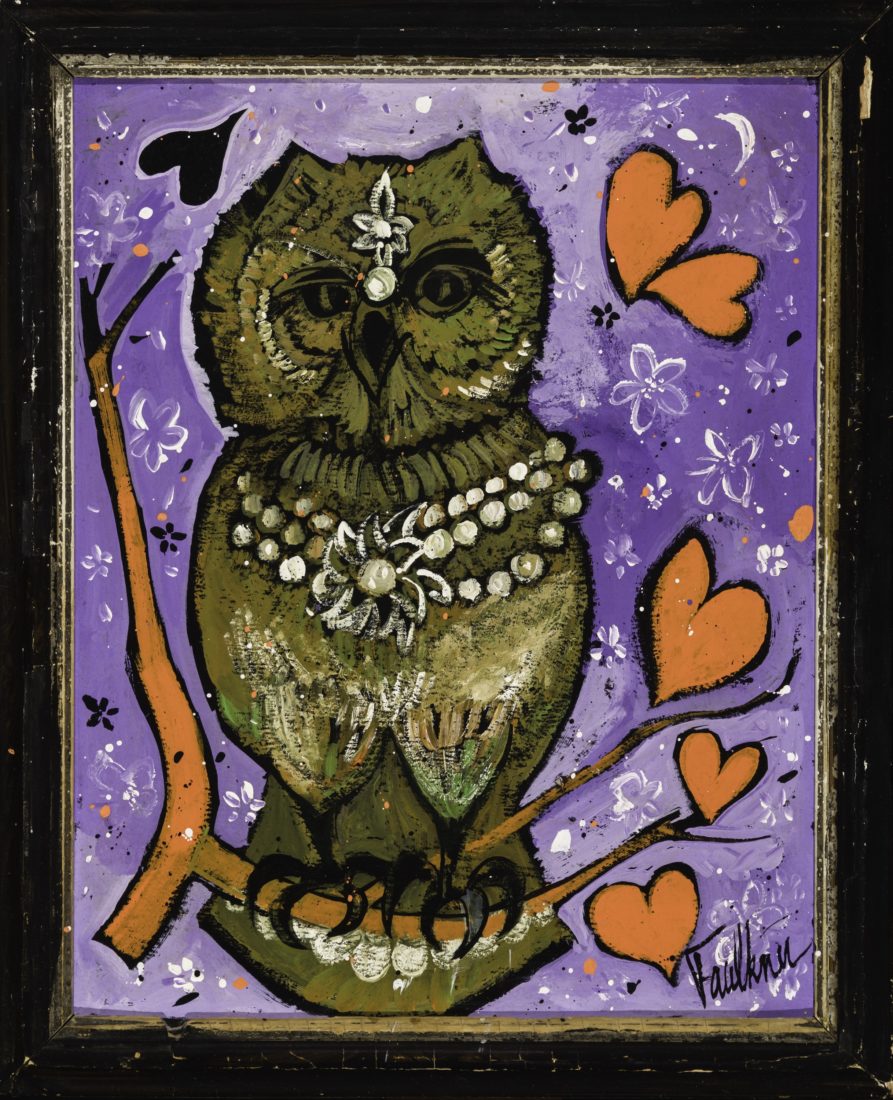
Faulkner’s lighthearted subjects and bright colors were a sharp contrast to his difficult childhood in orphanages and foster care, where his conservative foster parents condemned art as “work of the devil,” Ladd explains. He also faced hardship as a young, queer man in the 1940s when laws and societal norms punished homosexuality, and he was sent to both jail and a psychiatric hospital. At the institution, he befriended the poet Ezra Pound, who encouraged Faulkner to continue painting and follow his passion.
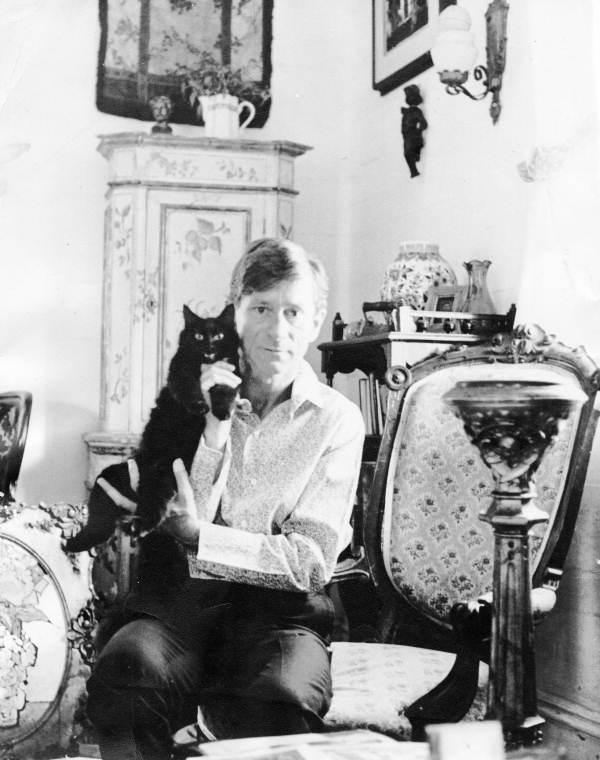
After pursuing formal artistic schooling on the West Coast, Faulkner returned to Kentucky and crafted vibrant scenes of gardens, florals, and animals on masonite panels, applying saturated colors straight from his tubes of oil paint. Sometimes, he scrawled short poems on the back of his pieces. He adored animals and had over twenty-five furry and feathered friends at his Lexington farm, including Alice, his constant companion and frequent muse.
Fualkner was especially popular in the social circles of Key West, Florida, where he often spent winters. Tennessee Williams and Ernest Hemingway embraced Faulkner as a friend and artist, and two of his paintings, including a house portrait commissioned by Hemingway’s wife, hung in the writer’s Key West home. “Henry got to be a kind of socialite,” Ladd says. “Everyone wanted to meet him.”
For those who did meet Faulkner, they also had the pleasure of meeting Alice, who went everywhere with the artist—including ritzy parties where she reportedly stole bourbon from party-goers’ cups. Even the University of Kentucky football fans loved her: After Alice made an on-field appearance with her owner (and a rabbit) during one halftime, the stands exploded with cheers.

Today, Faulkner is still celebrated in Lexington and beyond, and his work is increasingly difficult to find. “There’s a big demand for them,” Ladd says. Cross Gate Gallery expected to sell the thirteen Faulkner paintings for a combined $182,000, but together they sold for nearly three times more than that. “Most of the people that buy Faulkner’s work at the auction are from this area and wished they had picked a few up when he was alive.” Though Faulkner’s work was often otherworldly, he could tap right into the Southern landscape for inspiration. One of Ladd’s own favorite works from the auction, Gratz Park, is an ode to the natural beauty and magic of his home place. “You look at his paintings, and you smile.”
